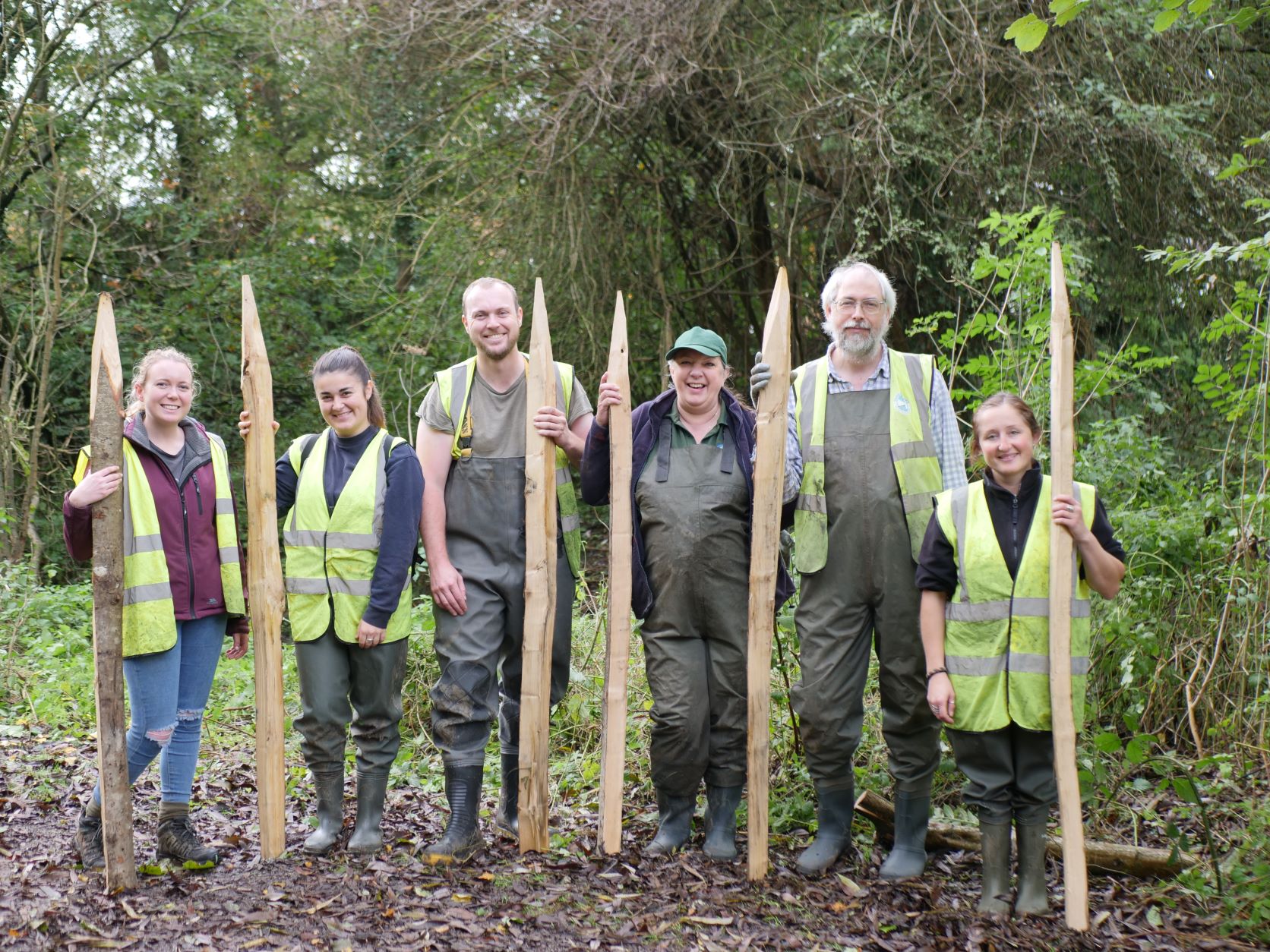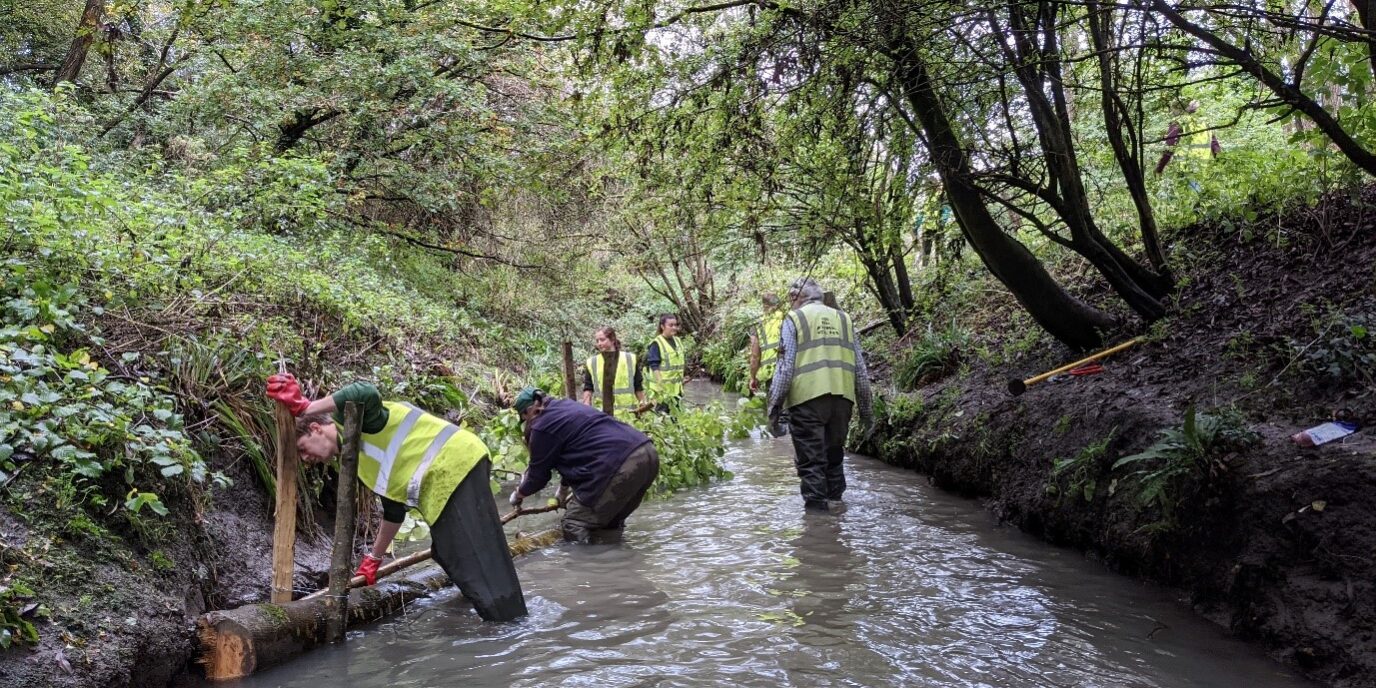BART and a team of local volunteers have been restoring river habitat in Stoke Brook, a tributary of the Bristol Frome which flows through Three Brooks Nature Reserve.
During October 2021, nine brushwood berms were added to a 500m stretch of the brook in Three Brooks Nature Reserve, Bradley Stoke. Brushwood berms are woody structures built in the river to encourage natural processes and increase flow and habitat diversity for river wildlife.
Stoke brook has been modified and straightened overtime. The over-wide channel was shallow and devoid of natural features, providing poor habitat for fish and other aquatic organisms. The artificially straight and uniform channel was characteristic of slow depositing flows; the bed was silty which smothered river bed gravels. In places, the brook was also over-shaded, preventing light reaching the watercourse, impacting aquatic plants and further depleting habitat diversity.
BART designed a habitat improvement scheme: using coppiced material to build brushwood berms in the river. These structures add diversity to flow, water is forced to speed up as it travels past them. They act as natural river meanders that would have once existed, especially in the summer months when the water level is lower. Fish and invertebrates find refuge in the woody material, which also capture silt and sediment. Sediment that would otherwise smother gravels and vegetation or would flow downstream.
To build the berms, a team of volunteers assisted BART, many of them from the local Three Brooks Conservation group. The team harvested much of the wood for the berms from the banks of the river and surrounding woodland. Areas of dense canopy were targeted to reduce over-shading and encourage growth of aquatic plants, which themselves provide valuable river habitat. Small branches (brushwood) were collected and tightly packed behind the main deflector arm of each berm. The woody deflectors were strategically positioned in the channel and secured to the river bed and banks to create a series of pinch points throughout the stretch of river.
When the water level in the brook is high, the berms are designed to over-top and could be underwater for months at a time. As the water flows quickly over and through them, they will capture fine sediment, eventually filling up and forming an extension of the riverbank. As the nine brushwood berms capture silt and become self-sustaining they will help create a more diverse river cross-section, creating deeper pools which will provide valuable habitat for fish.
The material that is scoured from the new pools will deposit downstream in slower flowing water, with this material forming suitable fish spawning habitat. The faster flowing sections that have been created in the brook provide a new habitat for fast-flow loving species such as water crowfoot, Ranunculus Aquatilis.
BART are working across the Bristol Avon catchment to restore our rivers and improve habitat for riparian wildlife. To find out more about this project or others across the catchment contact rozy@bristolavonriverstrust.org.
Thank you to Environment Agency, Postcode Local Trust and Bristol Frome Reconnected for funding this project. Also thank you for the help of our partners South Gloucester Council and Three Brooks Conservation Group.









